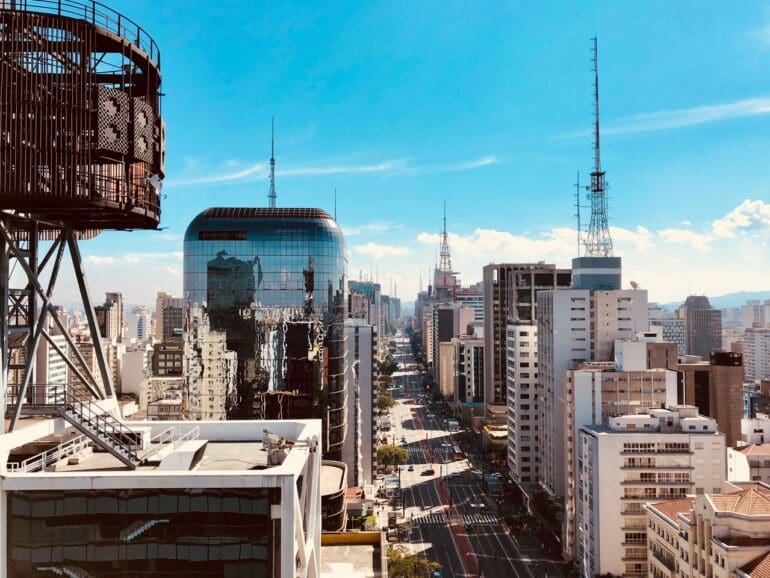Despite a more challenging scenario for Latin American fintechs, Brazil’s digital banks and virtual wallets continue to plow ahead with customer acquisition strategies, signing up millions of clients even as many are forced to cut costs and trim workforces.
The largest digital bank Nubank reported 75 million customers in Brazil in the first quarter, up 4.4 million from the previous three-month period.
While it upholds client growth, the fintech appears to move past breakeven. It reported $141.8 million in profits, up from $59 million in the linked quarter and a loss of $45 million in the year-ago period.
From lows of $3.50 apiece in January, shares of the digital bank have posted an impressive recovery so far. They now trade over $7 per share.
But Nubank is not alone in its ambitious bet in the Brazilian market. Other competitors are also faring relatively well in the crisis, making strides in the local market as digital banking becomes increasingly competitive in Brazil.
Smaller-sized Banco Inter, for instance, added 1.4 million new customers in the last quarter. This takes its overall customer base to over 26.3 million. Its share has risen by over 70% year to date, echoing a global recovery trend among technology companies.
Neon, a fintech unicorn invested by Spanish banking giant BBVA, has also seen customer growth. Last year, its base rose to 22 million, up 35% yearly.
“Generation Z, which represents roughly 40% of the population in Latin America, is a great lever for this growth that digital banks are experiencing,” said Marcela Lachowski, a partnerships manager at Plug and Play Tech Center.
“The trend is to continue seeing growth for the digital banking market, and while digitization has advanced a lot in recent years, there is still much room for further growth.”
Monetization is the next challenge
Digital banks in Latin America, as in many places in the world, have dealt in the past few quarters with a new reality. There is not as much investment capital in the region following years of record-high venture capital funding.
As such, many large-scale fintech, which had grown aggressively during the pandemic, were driven to cut costs. Neon reduced its head force by 9% earlier in the year. Nubank recently laid off close to 300 employees amid a corporate restructuring.
The overarching goal is to accelerate the path to breakeven.
On that front, several of Brazil’s most prominent digital banks appear to show optimistic initial results.
Beyond Nubank, Banco Inter has also produced net income, albeit still minuscule. Its profits rose to 24.2 million reais ($5 million), its second straight quarter with positive results. Picpay, another digital wallet in the country, also reported its first-ever profits this year.

For its part, the e-commerce giant Mercado Libre is reaping the benefits of its long-term fintech strategy. It revamped its financial technology unit Mercado Pago as a full-fledged digital bank.
Fintech is now one of the fastest-growing segments in the group and accounts for almost half its revenue.
Mercado Pago brought in $0.7 billion in the first quarter in Brazil alone, up 20% every year. Although the company does not disclose users by country, it reported 44.5 million unique active fintech users this year, up from 35.8 million in early 2022.
Inroads in lending
Brazil’s $1 trillion credit market opportunities are critical to increasing fintech revenue. In that regard, Nubank, the largest in the country by number of customers, has made a decisive entry into the payroll lending segment.
“As we grow our share in the profit pools we are targeting, all while maintaining a monthly cost-to-serve below US$1 per customer, our profitability will increase,” said David Velez, its CEO.
According to data from the central bank, digital banks now represent almost 6% of all loans to individuals in Latin America’s largest economy. That is up from 4.8% by the end of 2021 and virtually nothing five years back.
However, the strategy is a risky one if not done carefully. Brazil’s central bank has raised interest rates repeatedly over the past years, taking it from a low of 2% to 13.25%. As such, default rates have been rising in the financial industry.
“The credit market will become challenging for digital portfolios, which generally do not have a relevant “war chest” to cover for significant default-level increases,” said Lachowski.
To be sure, not all fintechs are faring well in this context. For Rodrigo Cabernite, CEO at fintech lender GYRA+, some smaller-sized startups will likely bear the brunt of the tightening.
“The credit market is quite tight at the moment, with banks and fintechs facing higher defaults.” For him, this mandates that many fintechs will readjust their strategies. “Fintechs are changing business models, and whoever has funding will make it to the other shore.”


